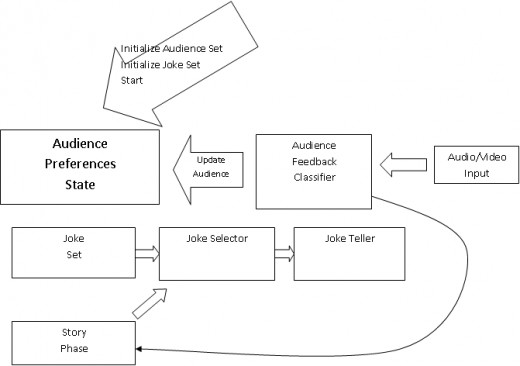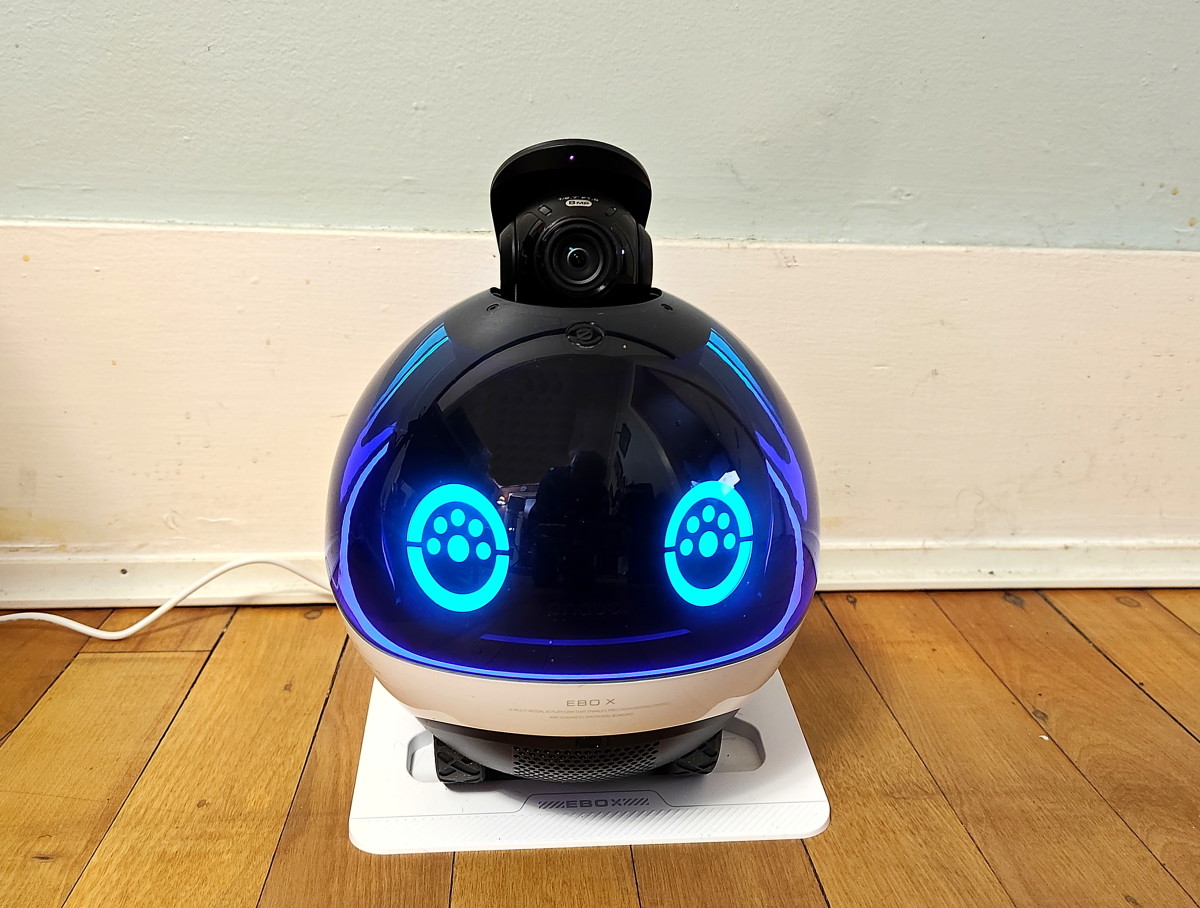Standup Comedy Robot at Technology Entertainment Design (TED)
How do You Teach a Robot to Interact with Humans?
Believe it or not, this is an important question. As computing power increases and inroads are made in artificial intelligence (AI) robot are actually capable of "learning" behavior. Though they are nowhere near being intelligent to have empathy for humans, they can certainly learn what patterns of speech or behavior are acceptable and what patterns aren't.
Of course this takes live human interaction with robots for them to learn. In fact, I've covered this before with Keepon Robot in US Stores Soon, in which Hideki Kozima, a Japanese engineer designed a robot to dance to music and respond positively to human touch.
A novel way of accomplishing this task is to teach the robot to tell jokes and have it gauge audience reaction. This seemingly simple idea is at the core of Heather Knight's field of study.

Who is Heather Knight
Ms. Knight is a PhD student at the prestigious Carnegie Mellon University. Of course, her field of research is robotics. She earned her Master of Science at Massachusetts Institute of Technology in MIT's famous media lab.
Ms. Knight has had a rather busy pre-professional life. She has worked in robotics and instrumentation at NASA’s Jet Propulsion Laboratory, helped produce an OK Go video (This Too Shall Pass) with interactive installations with Syyn Labs. She has also worked with Alderbaran Robotics as a sensor designer.
"My first real experience with technology was on a high school science team. I remember one event in particular. I worked with a team member where you weren’t told in advance what materials you were going to use for a project – sometimes it would be marshmallows, other times it would be Lego, all different kinds of stuff. You had to practice working together to build a structure using whatever materials were provided on competition day. To make it more challenging, one team member had to create a written description of how to build the object with the materials provided, while your partner waited in another room. Your partner then had to re-create the object using the description. It’s amazing how easy it is to mis-communicate. I liked that event a lot and became interested in robots later, in college." -- Heather Knight

Robot in the Wild
Ms. Knight's presentation at the Technology Entertainment Design (TED) show in December highlighted the talents of Robot in the Wild (RiW). A robot designed to entertain a crowd with jokes. Ms. Knight jokingly refers to this is Siilicon Theater.
The robot is wired to a computer that samples audience reaction both visually and audibly. The process looks simple, but it involves reading the reactions from a collection of colored cards and also sampling the vocal responses of the audience.
The robot tells a joke, delivers the punchline, and then monitors the two sensory inputs described above. If response is poor it discards jokes from a list of selected jokes by category and begins delivering lines from a new list. In the process it learns which types of jokes are acceptable and which fall flat.
As simple as it sounds there's a lot of processing going on. A rough idea of how this all works is presented in the graphic at right.
The Point of this Experiment
As mentioned in the introduction, the entire idea really boils down to how well humans interact with robots. In the not so distant future more industrial societies will be relying on robots to perform functions that younger people might have taken on in the past. In home wellness care provider, companion, and medical monitor are all tasks that a robot could handle successfully if only the people interacting with them are comfortable with them and trust them.
"One of the first things I observed is how open people are to robots – the whole room comes alive when you have this physical object on stage – people connect with robots on a plane that is very distinct from how they connect with a two dimensional computer screen. Animated toys bring the experience into the physical world, and I like the idea of that.
"I think there are some really exciting applications in the world of social robots, personal robots – robots and people working together to help another person. For example, in a medical situation you could have a robot that acts as a companion, makes a person feel comfortable, and also helps remind them to take their medicine and take the right amount, or reminds them to exercise, or makes exercise more fun. It’s not like the robot is responsible for the more serious aspects of care, but rather they act as an assistant making the job of the doctor more effective. I like the idea of people using robots to connect with other people." - Heather Knight
Despite the frivolous sounding nature of this, the research is very important.
Silicon Based Comedy - Heather Knight
Coda
First, please forgive the rather long Rolex commercial at the end of the YouTube clip. This is the only copy of the presentation I could find and I looked at a score of these clips hoping to avoid the commercial...no luck.
Though the presentation may seem a bit more like a marketing campaign for a joke telling robot it really isn't. As Ms. Knight states in the intro she had no idea what RiW was going to come up with. By presenting her research to such a large open forum she was able to gather data from a much larger set of people in order to fine tune the programming for RiW. This in turn will provide her with information on how to create a machine that can both respond positively to and engender positive responses in humans.
Disclaimer
The author was not compensated in any way, monetarily, with discounts, or freebies by any of the companies mentioned.
Though the author does make a small profit for the word count of this article none of that comes directly from the manufacturers mentioned. The author also stands to make a small profit from advertising attached to this article.
The author has no control over either the advertising or the contents of those ads.








